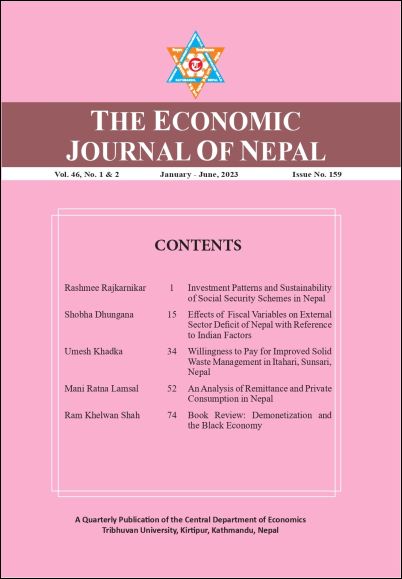Investment Patterns and Sustainability of Social Security Schemes in Nepal
DOI:
https://doi.org/10.3126/ejon.v46i1-2.68022Keywords:
Social securities, Contribution-based social security, Investment, Social Security fund sustainabilityAbstract
Social security programme based on contributions of employees was introduced in Nepal by enacting the Employee Provident Fund Act - 1962, primarily to address the security needs of the retiring population. Employees Provident Fund, Citizen Investment Trust, and Social Security Funds are three major competing institutions in the social security market in Nepal. This paper explores the investment of funds accumulated through the contribution of employees for value creation as a means to enhance financial viability and further assesses the long-term sustainability of such programmes. The study is based on reviewing and analyzing the documents relating to the defined objectives and targets, investment policies, investment portfolio, legal framework for investment, and achievements. The study finds that all three social security institutions (SSIs) end up investing the accumulated funds in fixed deposits in the banking and financial institutions (BFIs.). This is despite the act empowering them to mobilize the accumulated funds in several productive sectors and set competitive investment goals. This indicates that they fail to explore productive avenues for sustainable investment of the accumulated funds, which could contribute to the economic development of the nation. The current challenges in the social security system in Nepal are the increasing number of pensioners and the need for sustainable investment; making it imperative for the Nepalese SSIs to evaluate their investment priority; feasibility and diversify for higher and long-term returns; focusing on areas that contribute to economic growth and development; and generating employment opportunities.
Downloads
Downloads
Published
How to Cite
Issue
Section
License
© Cedecon-TU




